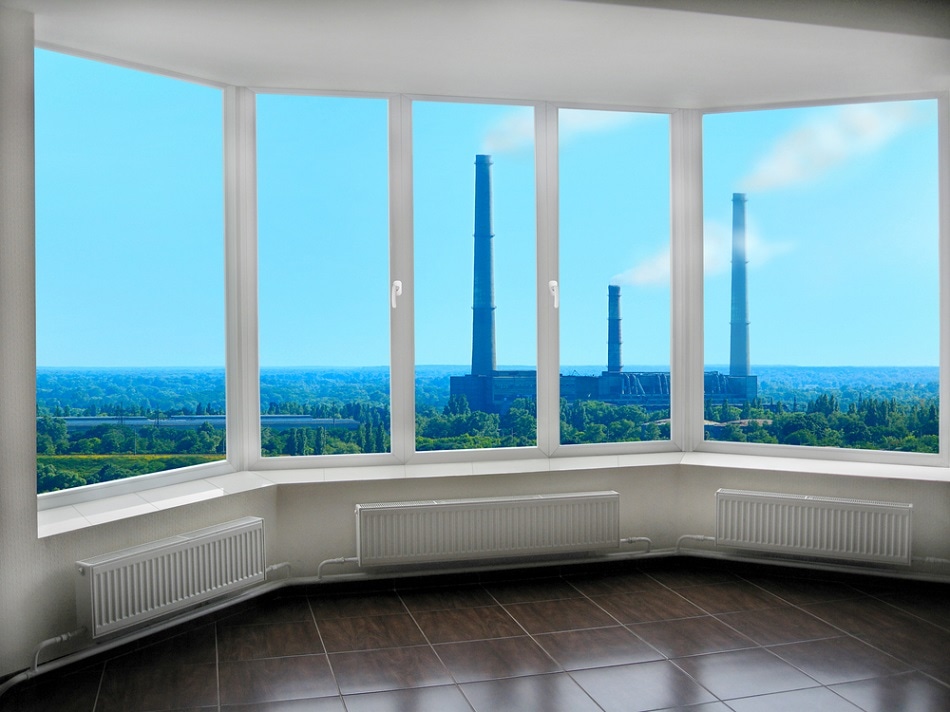Sep 13 2017
A number of homes and also certain eco-friendly structures may be prone to indoor air pollution. An innovative research performed by Scientists from the Silent Spring Institute gives a better viewpoint of the origin of such pollutants—namely, the pollutants formed from chemicals being discharged from building materials and the pollutants brought into the home by people in the form of personal items.
 Alexmak7/ Shutterstock.com
Alexmak7/ Shutterstock.com
The findings could inform the development of new green building standards and lead to healthier housing, especially for low-income communities.
Most buildings aren’t designed with people’s health in mind. Yet, indoor air pollution can lead to a range of health problems.
Robin Dodson, Environmental Exposure Scientist, Silent Spring Institute and Lead Author of the study
In order to zero in on the main sources of pollution, she and her collaborators gathered dust and air samples from recently refurbished subsidized houses in the City of Boston both before and after people occupied the houses. The houses were refurbished to satisfy specific “green” standards, specifically intended to achieve energy efficaciousness. “This is the first study to look at air pollutants pre- and post-occupancy, allowing us to really hone in on the sources.” Dodson added.
The quality of indoor air is a cause of worry specifically in minority and low-income neighborhoods as research works have demonstrated that the amount of indoor pollutants are normally greater in such areas than well-to-do communities.
Many factors shape environmental exposures for low-income families living in multifamily housing. These families are also burdened with higher rates of asthma and other diseases linked with environmental contaminants. This study helps to shed light on the factors that shape these exposures.
Gary Adamkiewicz, the Harvard T.H. Chan School of Public Health and Co-author of this study
The research team investigated about 100 chemicals, such as pesticides, phthalates, antimicrobials, flame retardants, fragrances, chlorinated solvents and formaldehyde. The team has reported the outcomes in Environment International in an article published on 12th September 2017. A number of disorders such as reproductive disorders, hormone disruption, lower IQ, asthma, and cancer have been known to be caused by being exposed to the abovementioned chemicals.
Dodson and her team compared the pollutant levels both before and after occupying the housing and recognized numerous chemicals that were probably emanated out of the building, including two flame retardants, namely, tris(1-chloro-2-propyl) phosphate (TCIPP) and tris(1,3-dichloroisopropyl) phosphate (TCDIPP). TCDIPP is a carcinogen and is known to reduce fertility in men. The research team doubted that these chemicals might be constituents of the insulation.
Surprisingly, the Researchers also discovered that many of the chemicals emanated from the buildings are common constituents of personal care items, including di-butyl phthalate (DBP), a chemical used in perfumes and nail polish, and benzophenone (BP) and benzophenone-3 (BP-3) chemicals used for making sunscreen. “We certainly didn’t expect to see that,” stated Dodson. “It’s possible these chemicals are being added to paints or floor finishes.”
After the residents moved in, the chemical composition of the indoor air altered. The Researchers noted a notable increase in the amount of fragrances used in cleaning and personal care items, triclosan which is an antimicrobial used in soaps and toothpaste, phthalates that are constituents of vinyl, plastics, and personal care items, and other flame retardants used in furniture. This indicates that presence of people also has a high impact on the indoor air, especially from their behaviors and personal belongings.
The team also came across numerous chemicals that have been phased out or banned. For example, the amount of BDE 47, a flame retardant, increased after the people moved in. BDE 47 is a constituent of a flame retardant composition commonly known as PentaBDE and was largely applied to furniture before being phased out in the year 2005 due to its impact on human health. Yet, the chemical still exists in second-hand or old furniture. Diazinon and propoxur, the pesticides prohibited in 2004 and 2007, respectively, from being used in households, could also be found inside the buildings.
Formaldehyde, which is a carcinogen, could be found in each and every building and seemed come to from the building as well as the residents. Formaldehyde levels at all the houses were above the risk-based screening levels indicated by the U.S. Environmental Protection Agency (EPA). It was discovered that numerous different chemicals exceeded the screening levels.
Dodson stated that the outcomes may pave the way for innovative policies for enhancing indoor air quality in low-income housing and other such developments. For example, consumers can assist in decreasing their exposures by using items that do not have fragrances or other harmful components. “But the onus shouldn’t be on them,” stated Dodson. “People living in public housing don’t have as much control over their building, and we know from this study that the building is an important source of exposure to harmful chemicals.”
Dodson stated that green building standards should be widened to incorporate other hazardous chemicals as well. This will prove specifically significant at times of crises (e.g. following a natural disaster such as Hurricane Harvey) when more new houses have to be re-constructed.
We should use these opportunities to get things right the first time by using safer, and healthier, materials that won’t make people sick.
Robin Dodson, Environmental Exposure Scientist, Silent Spring Institute and Lead Author of the study
For more advices on decreasing exposures to hazardous chemicals at homes, download Detox Me, a free mobile app for healthier living created by Silent Spring, which is available in English as well as Spanish.